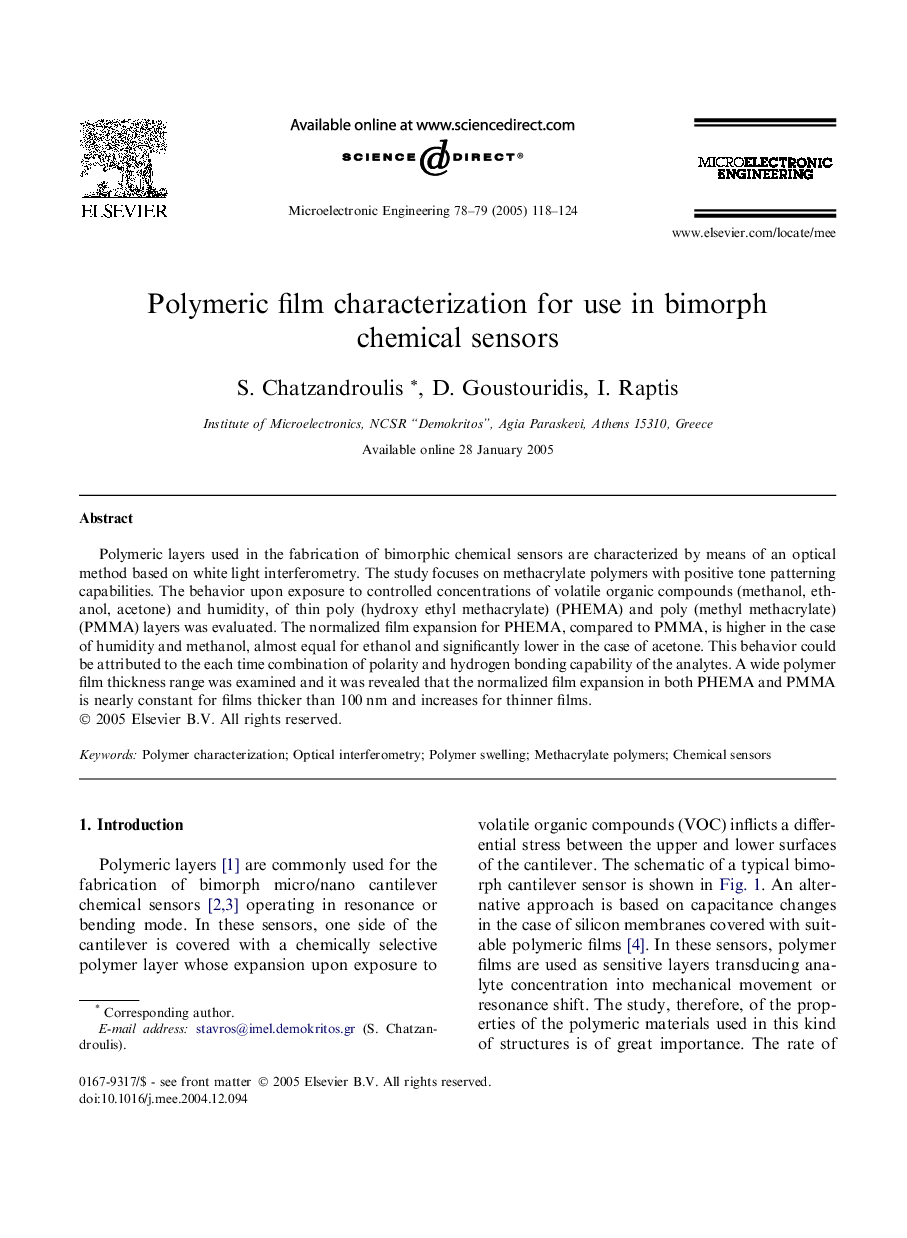| Article ID | Journal | Published Year | Pages | File Type |
|---|---|---|---|---|
| 9670563 | Microelectronic Engineering | 2005 | 7 Pages |
Abstract
Polymeric layers used in the fabrication of bimorphic chemical sensors are characterized by means of an optical method based on white light interferometry. The study focuses on methacrylate polymers with positive tone patterning capabilities. The behavior upon exposure to controlled concentrations of volatile organic compounds (methanol, ethanol, acetone) and humidity, of thin poly (hydroxy ethyl methacrylate) (PHEMA) and poly (methyl methacrylate) (PMMA) layers was evaluated. The normalized film expansion for PHEMA, compared to PMMA, is higher in the case of humidity and methanol, almost equal for ethanol and significantly lower in the case of acetone. This behavior could be attributed to the each time combination of polarity and hydrogen bonding capability of the analytes. A wide polymer film thickness range was examined and it was revealed that the normalized film expansion in both PHEMA and PMMA is nearly constant for films thicker than 100Â nm and increases for thinner films.
Keywords
Related Topics
Physical Sciences and Engineering
Computer Science
Hardware and Architecture
Authors
S. Chatzandroulis, D. Goustouridis, I. Raptis,
